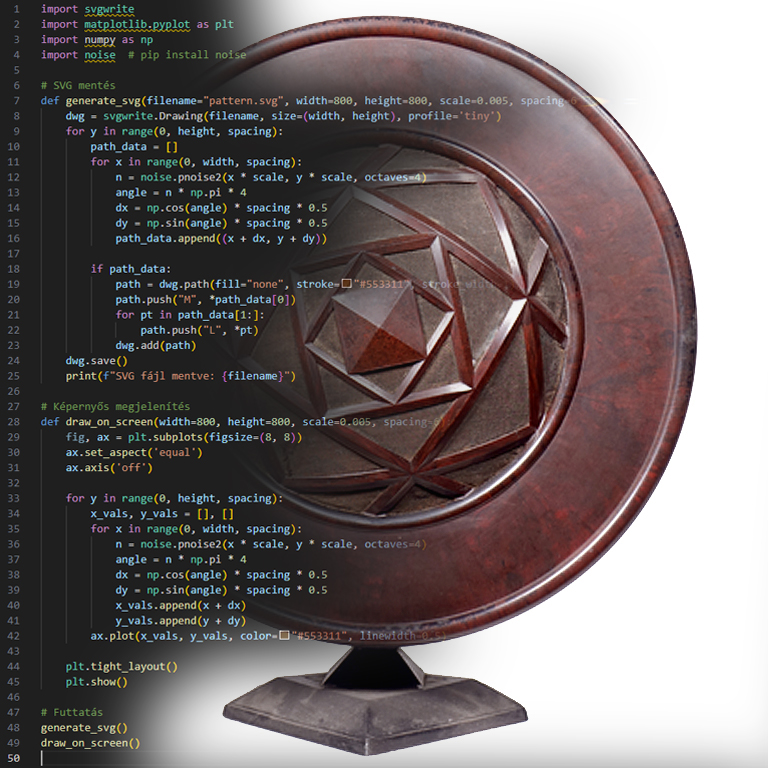Vintage radios are more than just functional electronics — they’re beautiful pieces of design history. From rich bakelite cabinets to finely woven speaker cloths, every detail was crafted to be both functional and elegant. But when it comes to restoration, some of the most iconic details can be the hardest to replace — especially the textured, fingerprint-like speaker fabric found on old Blaupunkt and other Art Deco radios. That’s where ChatGPT came in.
🛠️ The Problem: Faded Fingerprints of the Past
While restoring a Blaupunkt bakelite cone speaker, I noticed something intriguing: the speaker cloth had a distinct, swirling pattern — almost like a giant human fingerprint. But decades of sunlight and dust had faded it to near invisibility. Replacing it wasn’t going to be easy.

Fabrics with similar patterns are available on the Radiogrillecloth.com website, but I couldn’t find anything like this there.
I searched Google for terms such as “vintage speaker grille cloth,” “fingerprint pattern,” “wave pattern,” etc. — but I couldn’t find a match for the pattern online, not in hardware stores, not in vintage resellers, not even on specialized restoration sites.
So I turned to ChatGPT and asked:
“Can you help me recreate this pattern?”
🧠 The AI Approach
What followed was an iterative creative process between human and machine. I uploaded a photo of the cloth, explained that the swirling “fingerprint” texture was original and deliberate, and asked ChatGPT to generate visuals that resembled it.
In a few cycles, using AI image generation tools, we created versions of the speaker cloth pattern:
- First with wide, spaced-out waves,
- Then tighter, denser swirls,
- Eventually arriving at an organic, woven-looking fingerprint pattern — nearly identical to the original.

But I didn’t want just a static image. I needed something usable: a vector-based version I could scale, print, and even cut into stencil or laser engraving formats.
💻 From Pixels to Vectors: Python + SVG
With a few prompts, ChatGPT provided a Python script that used Perlin noise to simulate natural, fingerprint-like waveforms. It:
- Generated the pattern as SVG vector graphics,
- Saved the result to a file (
pattern.svg), - And optionally displayed the image on-screen using
matplotlib.
This let me preview and tweak the design instantly, adjusting the wave spacing, randomness, and line thickness until the pattern felt just right.
pythonMásolásSzerkesztés# (excerpt from the script)
angle = noise.pnoise2(x * scale, y * scale) * math.pi * 4
dx = math.cos(angle) * spacing * 0.5
dy = math.sin(angle) * spacing * 0.5
Suddenly, I had a working digital version of the original 1930s-style speaker cloth pattern.
🖨️ What’s Next: Printing and Application
Now that I had a scalable SVG version of the texture, my options opened up:
- I could print it on acoustic fabric using a sublimation printer,
- Engrave it into thin veneer or metal mesh for custom grilles,
- Or just keep it as a reference for identifying similar vintage parts.
Better still, I can regenerate infinite variations — denser waves, deeper ridges, even simulate aging or uneven fading.
🤖 ChatGPT as a Restoration Partner
This project wasn’t just about software or image generation — it was a creative collaboration. ChatGPT acted as a research assistant, visual designer, Python tutor, and debugger all in one.
For those restoring vintage radios, guitars, speakers, or other retro electronics, AI tools like ChatGPT can now bridge the gap between what you see in the real world and what you can’t find online.
Next time you’re missing a rare part, a strange fabric, or a one-of-a-kind design element, don’t give up — describe it to ChatGPT and see where the collaboration takes you.

